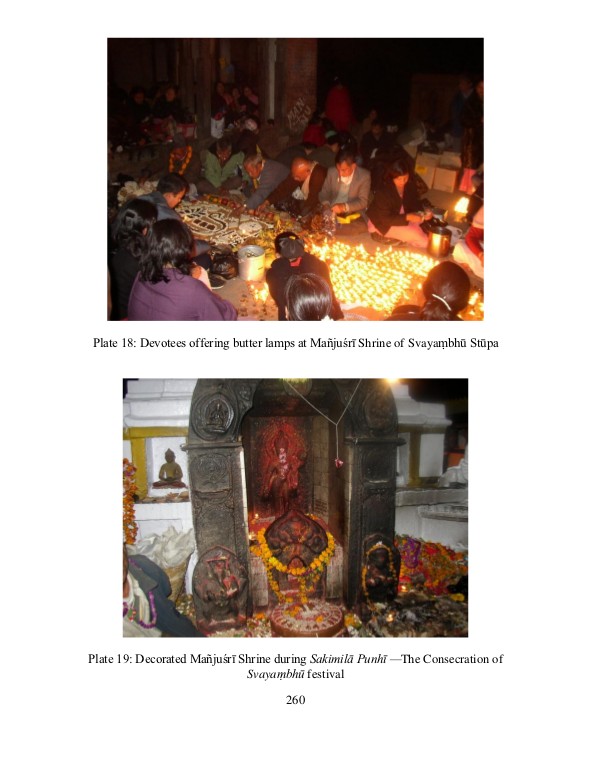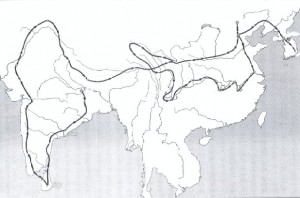Miroj Shakya. ‘Bodhisattva Mañjuśrī in the Buddhist Literature of the Kathmandu Valley (With Special Reference to the Svayaṃbhū Purāṇa)’. PhD dissertation, University of the West, Spring 2011. 261 pp.
From the Abstract
Mañjuśrī is portrayed as a founder of the Kathmandu Valley in the Svayaṃbhū Purāṇa, where he is shown playing a vital role in initiating the Nepalese Buddhist tradition. […] My study will focus on these legends of the Svayaṃbhū Purāṇa associated with Mañjuśrī.
Includes studies of short non-tantric texts related to Mañjuśrī, and texts and translations of various versions of the third chapter (on Mañjuśrī’s fabled draining of the Valley’s pleistocene lake) of the Svayambhūpurāṇa literature.




